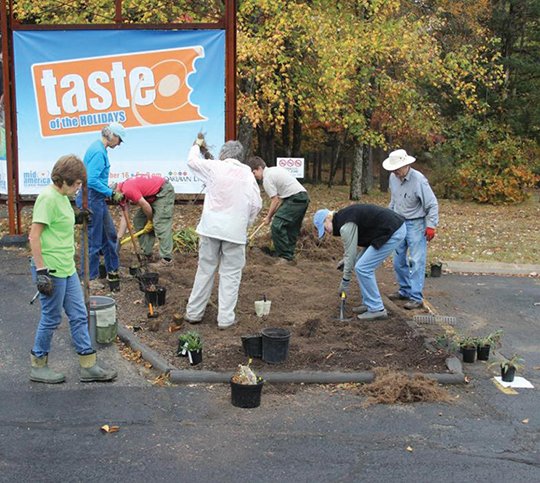U.S. Forest Service employees, Garland County Master Gardeners, Diamond Lake Master Naturalists and Arkansas Native Plant Society members joined together to plant three pollinator gardens at the front entrance of the Mid-America Science Museum on Nov. 6.
Funding for the project was obtained through the Arkansas Native Plant Society's Small Grant program. Grants are provided for projects that promote awareness and education of Arkansas native plants to the public. In addition to the plants, the grant will fund several education interpretive signs related to pollinators and native plants.
The idea for planting the pollinator gardens came from Barry Horner, a Diamond Lake master naturalist, while speaking with Virginia McDaniel, a forestry technician at the Forest Service Southern Research Station in Hot Springs, a news release said.
"Barry Horner approached me with a proposal," McDaniel said. "There are three empty flower beds at the entrance to the Mid-America Science Museum in Hot Springs. It is a first-rate science museum and Barry thought the entrance would be a great place to showcase the beauty and diversity of Arkansas flora with native plant, pollinator gardens. It seemed to fall in line with the Forest Service mission of conserving and promoting natural systems as well as educating the public."
Horner and McDaniel visited Mid-America and suggested they apply for an ANPS grant to assist with the project.
Once Mid-America received the grant, McDaniel went to work. She enlisted the help of Susan Hooks, the Ouachita National Forest's botanist and ecologist, to assist with garden design and deciding what plants would provide the best pollinator habitat. They also looked at what was aesthetically pleasing and would provide color throughout the seasons.
"Susan and I designed the gardens and then I helped Mid-America locate the desired native plants from a reputable native plant nursery," she said. "Additionally, about half the plants were donated from several ANPS members who have green thumbs. I then coordinated with the Diamond Lake Master Naturalists, Garland County Master Gardeners, and ANPS to get folks out for the workday on Monday."
After approximately an hour and a half of digging and planting, the project was complete.
"We are really excited about having native plants that attract pollinators so that we can use those garden beds as teaching tools for the public," said Diane LaFollette, executive director of the Mid-America Science Museum. "We are grateful to the ANPS for the grant that has created the opportunity to educate our public and improve the grounds at the museum. We thank all of the people who came out to work in our plant beds to make it happen."
Visitors to the museum will see their work in the spring when the plants will begin to grow and bloom.
Entertainment on 11/11/2017